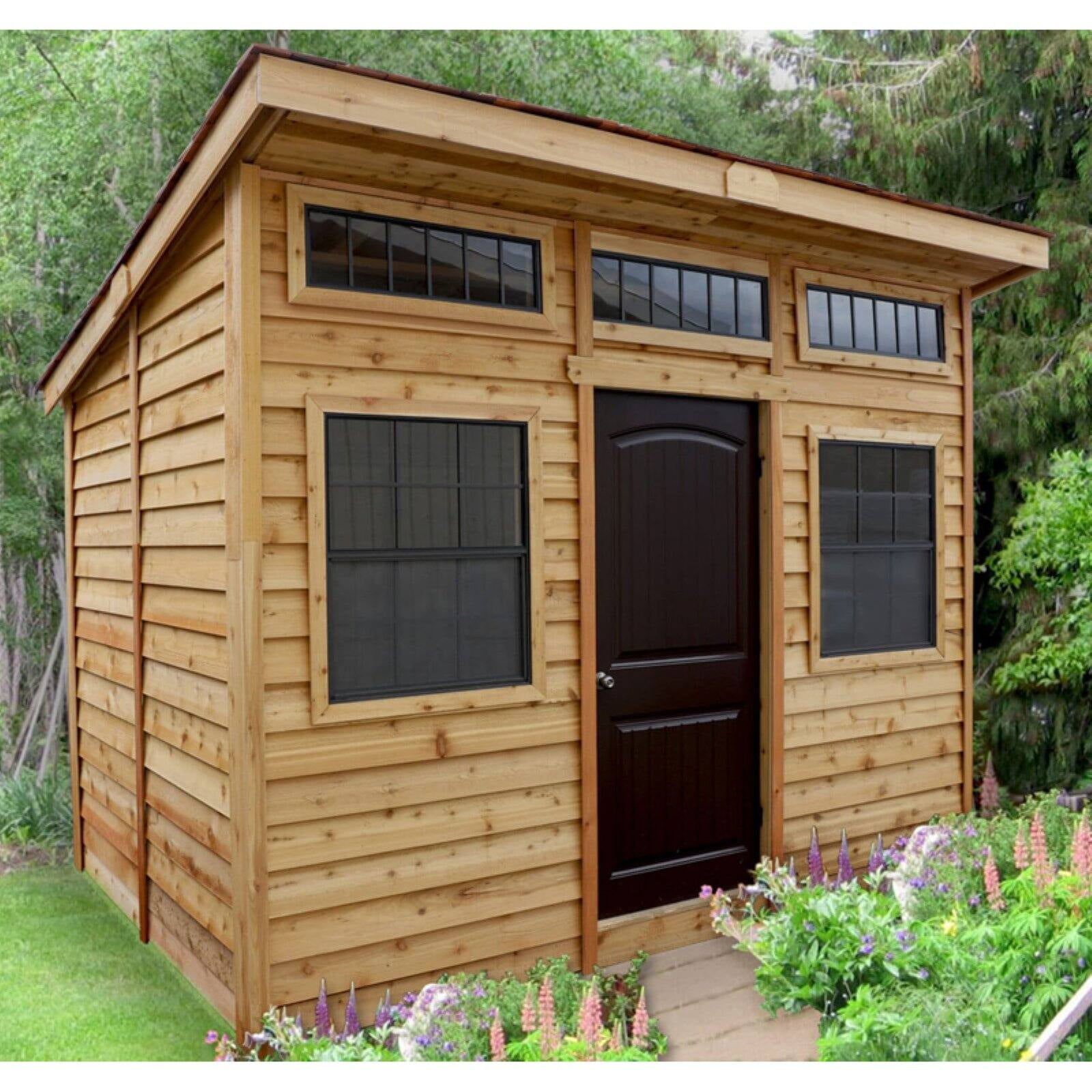How to build a backyard shed – Delve into the art of backyard shed construction with this comprehensive guide. From planning and design to finishing touches, we’ll empower you to create a functional and stylish outdoor space.
With meticulous attention to detail and clear instructions, this guide will guide you through every stage of the shed-building process, ensuring a successful outcome.
Materials and Tools

To construct a sturdy and functional backyard shed, you’ll need a carefully curated selection of materials and tools. These elements form the backbone of your project and directly impact the shed’s durability, aesthetics, and overall performance.
Essential Materials
- Wood:Pressure-treated lumber (typically 2x4s and 2x6s) provides excellent resistance to rot and decay, making it ideal for outdoor structures.
- Roofing:Asphalt shingles or metal roofing offer reliable protection from the elements.
- Nails and Screws:Galvanized or stainless steel nails and screws resist rust and ensure a secure hold.
- Hardware:Hinges, handles, and latches add functionality and ease of use to your shed.
Indispensable Tools
- Circular Saw:For precise cutting of wood.
- Hammer:For driving nails.
- Drill:For creating pilot holes and installing screws.
- Level:For ensuring straight and even surfaces.
- Measuring Tape:For accurate measurements and layout.
- Safety Gear:Gloves, safety glasses, and a mask protect you during construction.
Design and Planning

Before embarking on the construction of your backyard shed, meticulous planning is essential to ensure a structure that meets your specific needs and complements your outdoor space. The first step involves determining the shed’s primary purpose and its corresponding size.
Will it serve as a storage haven for gardening tools, a cozy workspace, or a secluded retreat? The intended use will dictate the necessary dimensions and layout.
Once the purpose and size are established, careful consideration must be given to the shed’s location. Optimal drainage is crucial to prevent water accumulation and potential damage. Avoid areas prone to flooding or excessive moisture. Additionally, sunlight exposure should be taken into account.
If the shed is intended for use as a workshop or hobby space, ample natural light is desirable. Conversely, if storage of sensitive items is the primary concern, a shaded location may be more suitable.
Layout and Design
The shed’s layout should be carefully planned to maximize functionality and accessibility. Determine the placement of windows and doors to ensure proper ventilation and ease of entry. Consider the location of shelves, cabinets, and workbenches based on the intended use of the space.
A well-organized and efficient layout will enhance the shed’s usability and enjoyment.
Construction Process

The construction process of your backyard shed involves meticulous steps to ensure stability, durability, and functionality. Each phase demands careful attention to detail and precision to achieve a sturdy and aesthetically pleasing structure.
Creating the Foundation
A solid foundation is crucial for the longevity of your shed. Begin by marking the perimeter and excavating the area to a depth of at least 6 inches. Fill the trench with gravel and compact it firmly to create a stable base.
Pour a concrete slab over the gravel, ensuring it is level and extends beyond the perimeter of the shed by a few inches.
Framing the Walls and Roof
Once the foundation has cured, it’s time to frame the walls and roof. Use pressure-treated lumber for the framing to resist moisture and decay. Assemble the wall frames on a flat surface, then raise them into place and secure them to the foundation using bolts or anchors.
Install cross-bracing to provide additional strength and rigidity to the walls.
For the roof, construct trusses or rafters and install them on top of the wall frames. Sheath the roof with plywood or OSB and cover it with roofing felt to protect it from moisture.
Installing Siding and Roofing, How to build a backyard shed
The final step is to install siding and roofing to complete the exterior of the shed. Choose siding material that complements your home’s style and is suitable for outdoor conditions. Cut the siding to size and nail it to the wall frames, starting from the bottom and working your way up.
Overlap the siding slightly to prevent water penetration.
For roofing, install shingles or metal panels over the roofing felt. Follow the manufacturer’s instructions carefully to ensure proper installation and prevent leaks.
Finishing Touches
Once the construction of the shed is complete, it’s essential to address the finishing touches to enhance its durability, functionality, and aesthetic appeal. These include waterproofing, insulation, and painting or staining.
Waterproofing the shed is crucial to protect it from moisture damage caused by rain, snow, or humidity. This can be achieved by applying a sealant or water-resistant coating to the exterior surfaces of the shed, including the roof, walls, and floor.
Proper waterproofing ensures the longevity of the shed and prevents rot, mold, and other moisture-related issues.
Insulation
Insulating the shed is an important consideration, especially if you plan to use it during extreme temperatures or for specific purposes such as a workshop or storage for sensitive items. Insulation helps regulate the temperature inside the shed, making it more comfortable to use and protecting its contents from extreme heat or cold.
Various insulation materials are available, such as fiberglass, cellulose, or spray foam, and the choice depends on factors like climate and the intended usage of the shed.
Painting or Staining
Painting or staining the shed not only enhances its appearance but also provides an additional layer of protection against the elements. Choose a paint or stain that is suitable for outdoor use and consider the color and finish that complement your home and surroundings.
A well-painted or stained shed adds aesthetic value to your backyard and ensures its durability against fading, peeling, and other weather-related damage.
Final Review: How To Build A Backyard Shed

As you complete your backyard shed, take pride in your accomplishment and enjoy the fruits of your labor. Whether you use it for storage, hobbies, or relaxation, this custom-built structure will enhance your outdoor experience for years to come.
